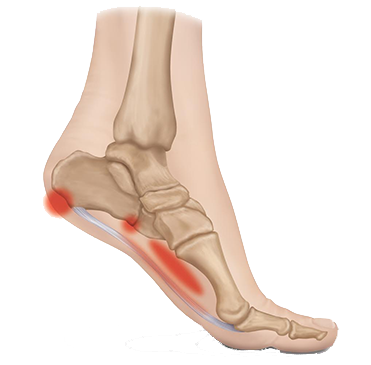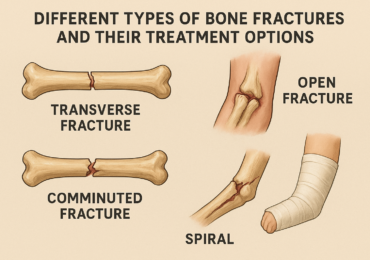Heel pain is one of the most common complaints among athletes, specially those involved in running, jumping, and high-impact sports. While occasional soreness may not be a concern, persistent heel pain can limit performance, reduce mobility, and even sideline athletes if not managed properly. Understanding the causes, treatment options, and preventive strategies is key to staying active and injury-free.
Causes of Heel Pain in Athletes:
Heel pain is a common challenge faced by athletes across different sports. Whether it’s running, jumping, or sudden movements, the constant stress on the feet can lead to discomfort and injury. Understanding the root causes of heel pain is essential for timely treatment and prevention, ensuring athletes stay at their best performance levels.
1. Plantar Fasciitis
One of the leading causes of heel pain, plantar fasciitis occurs when the thick band of tissue that connects the heel bone to the toes becomes inflamed. Repetitive running, sudden increases in training intensity, or inadequate stretching can all contribute to this condition.
2. Heel Spurs
Heel spurs are bony growths that develop at the bottom of the heel bone, often associated with plantar fasciitis. They can cause sharp, stabbing pain, especially during running or prolonged standing.
3. Achilles Tendinitis
Athletes who engage in sprinting or jumping are prone to Achilles tendinitis. This condition results from overuse of the Achilles tendon, leading to pain at the back of the heel and stiffness during activity.
4. Stress Fractures
Repetitive impact from sports like long-distance running or basketball can lead to small cracks in the heel bone. Stress fractures often cause deep pain that worsens with activity and improves with rest.
5. Bursitis
Inflammation of the bursae (small fluid-filled sacs) around the heel joint may occur due to repetitive motion or pressure. This condition causes swelling and tenderness around the heel.
6. Improper Footwear
Athletes who wear shoes with poor cushioning, inadequate arch support, or worn-out soles increase their risk of heel pain. Footwear that doesn’t match the sport or training intensity also contributes to injuries.
7. Flat Feet or High Arches
Abnormal foot mechanics, such as flat feet or very high arches, place additional strain on the heel and plantar fascia. Over time, this can cause pain and reduced athletic performance.
Treatment Options for Heel Pain in Athletes:
Heel pain can be frustrating for athletes, often interfering with training, performance, and daily life. While rest may temporarily ease the discomfort, effective treatment is essential to address the root cause and prevent recurrence. From simple home remedies to advanced medical interventions, athletes today have multiple treatment options to ensure faster recovery and a safe return to sports.
1. Rest and Activity Modification
Taking a break from high-impact activities is the first step. Athletes may need to temporarily switch to low-impact exercises such as swimming or cycling until pain improves.
2. Ice Therapy
Applying ice packs to the heel for 15–20 minutes after activity helps reduce inflammation and relieve soreness.
3. Stretching and Strengthening Exercises
Targeted stretches for the calf muscles, Achilles tendon, and plantar fascia can ease tightness and promote healing. Strengthening foot muscles also helps improve support and stability.
4. Supportive Footwear and Orthotics
Wearing well-cushioned, supportive shoes is vital. Custom orthotic insoles may be recommended to correct abnormal foot mechanics and reduce stress on the heel.
5. Medications
Nonsteroidal anti-inflammatory drugs (NSAIDs) can be used to manage pain and swelling in the short term, especially during flare-ups.
6. Physical Therapy
A structured physical therapy program can combine stretching, strengthening, ultrasound, and other modalities to accelerate recovery and prevent recurrence.
7. Advanced Treatments
Shockwave Therapy (ESWT): Stimulates healing in chronic cases of plantar fasciitis or Achilles tendinitis.
Platelet-Rich Plasma (PRP) Injections: Promote tissue repair and reduce inflammation.
Steroid Injections: May be used for severe pain but are considered cautiously due to potential side effects.
8. Surgical Options
When conservative treatments fail, surgery may be considered to release tight tissues, remove heel spurs, or repair damage. Surgery is rare and reserved for persistent, severe cases.
Prevention Tips for Athletes
Warm-Up Properly: Always stretch before and after workouts to keep muscles flexible.
Wear the Right Footwear: Choose sports shoes that match your activity and foot type.
Avoid Overtraining: Increase intensity gradually to prevent stress injuries.
Maintain a Healthy Weight: Extra body weight increases stress on the heel.
Strengthen Foot Muscles: Simple foot and ankle exercises improve stability and reduce injury risk.
Conclusion:
For expert diagnosis and tailored care plans, consult Dr. Aditya Orthocare, your trusted foot and ankle specialist in Hyderabad.



